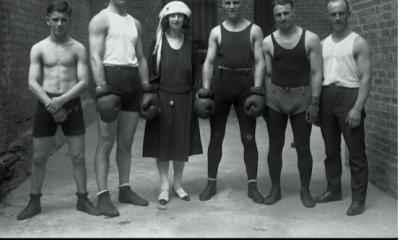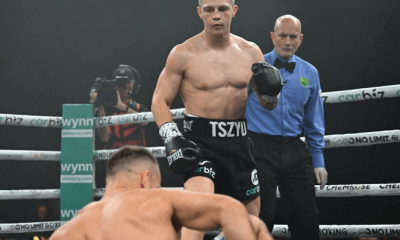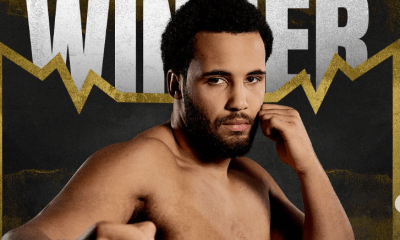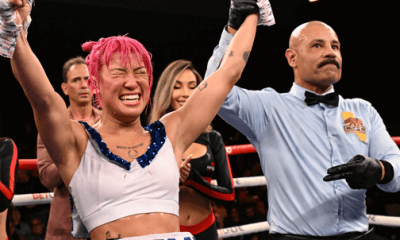Featured Articles
The Top Ten Superflyweights of the Decade: 2010-2019
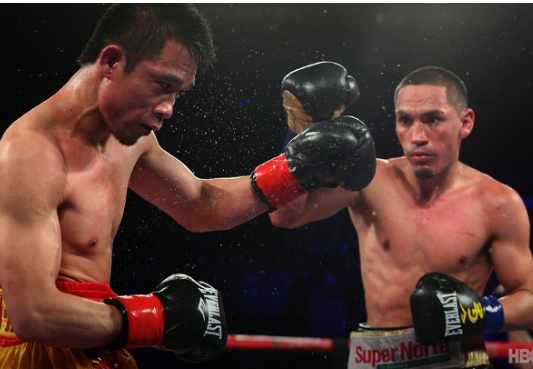
Appraising the best superflyweights of the past decade was fascinating, not least because of the many excellent fights delivered throughout, but also because of the matchmaking strategy the top superflies almost universally engaged in. Top superflyweights do not duck each other; they duck lesser contenders.
In essence, the best of 115lbs spend time beating up prospects and gatekeepers then stage monumental showdowns with one another for the biggest dollar figure their stature can muster. It is refreshing and strange to work on and the result is this: no other division has delivered such numerically light resumes and no other weight class has seen so many fighters from the decadal top ten face each other.
It made things easier except when it didn’t – numbers one and two are really numbers 1a and 1b this time around, for example.
I hope you enjoy reading about it.
10 – Tomas Rojas
Peak Ranking: 2 Record for the Decade: 20-7 Ranked For: 18% of the decade
There were no fewer than seven candidates for the #10 spot.
Separating them was extremely difficult and Tomas Rojas’s claim upon the position is not irrefutable. What cemented his placement in the end were his victories over Suriyan Kaikanha and Nobuo Nashiro, who were themselves (briefly in the case of Nashiro) candidates for the #10 spot. Many of the men in contention fought one another. Rojas was the only man without a spot to defeat two of them. It seems a reasonable selection.
Jerwin Ancajas, currently ranked the world’s number four super-flyweight, was my original choice, but his draw against Santiago Barrios is troubling; I can’t find a scorecard for anything but an Ancajas loss in that fight, and for a fighter whose best win was McJoe Arroyo, that won’t do. He was elbowed aside for Zolani Tete, but in the end, Tete’s best wins at the weight don’t quite measure up to those of Rojas and in combination with two losses at the poundage, Tete was barely edged out. Kaikanha, Nashiro and Kohei Kono were briefly considered but fell short for varied reasons and while Kazuto Ioka was an appealing choice, he suffered a defeat to Donnie Nietes. Nietes, on the other hand, fought exactly two fights at 115lbs: a controversial draw with Aston Palicte and that controversial win over Ioka.
So, it is Rojas, who despite some disappointing results higher up the scale lost only a single fight at 115lbs in the decade. His two key wins were unsurprisingly against Nashiro and Kono and his peak performance was Kono; that 2010 contest is worth tracking down for Rojas’s absurd dominance, quick-footed, quick-handed, with handsome, clean southpaw punching throughout. Despite a last round scare it was a blue-chip performance.
Rojas was chased from the division by the wildly inconsistent Suriyan Kaikanha, which is a mark against him, but I’m satisfied he’s the right man for the #10 spot.
09 – Yota Sato
Peak Ranking: 2 Record for the Decade: 9-1 Ranked For: 30% of the decade
Like Rojas, Yota Sato was bogged down in comparisons with the other candidate for the number ten spot, exalted by having, like Rojas, two victories over contenders for the #10 spot. In addition, he racked up more wins at the poundage. Just a little more activity was enough to get him across the line, so little is there to separate them – if only they could have met in the ring, it would have been a tremendous contest.
First of the candidates for this list to be beaten by Sato was Kohei Kono, with whom he clashed in early 2011 for the Japanese superfly title. Kono would go on to become a name that mattered with victories over Koki Kameda and Denkaosan Kaovichit. Against Sato he deployed pressure, seeking to bull his way inside and deploy bunches. Sato, who was comfortable on his toes, came down often to duke it out with him but it was the rounds he won on the move that were key. Sato’s footwork is fascinating, high stance, quick moves that licence some fascinating leads, from right hands to left hooks to the body to uppercuts. It was the latter that was the key in the Kono fight, an absolute peach of a counter on the inside dropping Kono for a count. The drama did not end there. Adaption and counter-adaption abounded in what was a fascinating learning fight for both men. Sato was a clear winner on points.
The following year he graduated for real, outpointing a vicious Suriyan Kaikanha. Kaikanha was the real deal, coming off victories over Tomas Rojas and Nobuo Nashiro; Sato dropped him twice in the third which was enough to keep him ahead on all three cards in a gruelling affair that acted as a final gut and chin-check for Sato.
Never less than fascinating, I enjoyed Sato’s career immensely. It was ended, a little prematurely in my view, behind the vicious 2013 thrashing administered by the great Srisaket Sor Rungvisai.
08 – Hugo Fidel Cazares
Peak Ranking: 1 Record for the Decade: 10-3 Ranked For: 17% of the decade
Hugo Fidel Cazares is famous, if he is famous at all, for being a victim; a victim of Ivan Calderon at 108lbs in 2008, a victim of Carl Frampton at 122lbs in 2014. He deserves more than this though and in between these two losses he did his best work, most of it at 115lbs. He is not helped here by the bisection of this purple patch by the changing of the decades, but did enough to get him over the line, the first lock of the list.
At the end of the 00s he had fought a thrilling and strangely forgotten immortal combat with the seemingly invulnerable Nobuo Nashiro, a fighter whose tendency to fall short at the highest level saw him only fleetingly considered for this list but whose astonishing durability made for a difficult night’s work for Cazares in a fight scored a draw. In their rematch, however, Cazares showed championship consistency born of experience and banked round after round to put a decision in the bank; it was neither controversial nor thrilling in the manner of their first contest.
It was also the most significant win of Hugo’s decade. Now the number one superfly in the world, he set out to cash in on his status with a series of quick matches against competent rather than glowing opposition before running into the much fresher Tomonobu Shimizu on what was his fourth visit to Japan. Even then the fight was so close that it could be argued he deserved the nod; Cazares was never beaten clearly at 115lbs in this century.
A strange fighter capable of hyperactive perma-feinting or traditional high-gloved occupation of ring centre, he perched so squarely over his leading leg it was sometimes hard to tell if he throwing southpaw or orthodox. He was also never anything less than good value and his smear into obscurity is undeserved.
07 – Tepparith Singwancha
Peak Ranking: 1 Record for the Decade: 27-1 Ranked For: 29% of the decade
Tepparith Singwancha, also known as Tepparith Kokietgym or Panthep Mullipoom, out of Thailand, was one of my favourites in the early 2010s, at least until he ran into Kohei Kono in 2012. The loss was incidental; it was his immediate and shameful retreat into Thailand where he gorged himself on six rounders against soft opposition that turned me away from him. Ignore the 27-1 paper record for the decade. It is a sugared turd.
But Singwancha enjoyed a handsome prime between the turn of the decade and that hurtful knockout loss to Kono. He squeezed in no fewer than thirteen wins in that short space of time, most of them against limited opposition but in back-to-back fights against Drian Francisco (23-0-1), Daiki Kameda (22-2), Tomonobu Shimizu (19-3-1) and Nobuo Nashiro (18-4-1), Singwancha made his bones for the decade.
Of these, it is Nashiro and Shimzu in which we are most interested, and it is Shimzu against whom Singwancha turned in his best performance. Not a fighter blessed with quick feet, Singwancha is a paradigm of consistency in applying pressure, never far from range, almost always in position to punch. Stopped just once he can hold superfly punches and return them with interest but has enough arbitrary head-movement to prevent himself becoming a punchbag. His persistence inflicts disorganisation on any opponent without the firepower or mobility to negate it; Shimzu, who met Singwancha in April of 2012, had neither of these things but nor was he cut adrift. Menaced by Singwancha’s swarming attack in the fourth, he succumbed to it in the ninth still in touch on the judge’s scorecards but overwhelmed by pressure of withering insistence. A ragged one-two punished him along the ropes.
06 – Omar Andres Narvaez
Peak Ranking: 1 Record for the Decade: 20-4 Ranked For: 50% of the decade
Omar Andres Narvaez’s superfly career was a crushing disappointment. He could only be regarded as the divisional number one and yet – and yet, Narvaez did so little of meaning. If “clearing out a division” has a diametric, Narvaez defined it.
The best fighter he met was probably Felipe Orucuta (stopped dramatically last summer by Jonathan Rodriguez) who he first met in May of 2013 and, I would argue, was lucky to do so in his native Argentina. The fight, which was close enough that it could not be deemed a robbery, nevertheless went against Orucuta, the bigger man, the bigger puncher, who seemed to have both outhit and outworked his more prestigious opponent. Orucuta was given a rematch the following year and it was on this night that Narvaez proved himself definitively to be world class.
Narvaez, who had been repeatedly pushed back by Orucuta’s aggression in the first fight, started directly and with precise volume punching but after the first two rounds he drifted again, cornered in the third and hit to the body. From the third it appeared nothing less than a continuation of that first gruelling fight. The difference was that Narvaez, who had lost the final four rounds even on the Argentinian television scorecard for the first fight, came roaring back at his man in tenth through twelfth to edge home by the narrowest of margins on my card and win a majority decision. It was as clean a gut-check as you might expect to see, and Narvaez passed it with flair and heart.
His number two opponent was Cesar Ceda, a rangy southpaw who also enjoyed a clear size advantage over Narvaez. He also appeared swifter when throwing those long, rapier-like punches, but after a slow start, Narvaez began to find him with regularity and in what was the most impressive performance of his career, Narvaez won a clear decision.
Ceda was probably a little better than his ranking (8), but he was also the last made man Narvaez would ever beat at 115lbs. His resume is barren. Beholden to the alphabets that controlled his career, he imported soft-touch after soft-touch to his Argentine stronghold for a long series of easy wins. When he finally left for Japan and a top five contender (the first he had ever met) he was summarily butchered by Naoya Inoue. So, is he good for the number six spot? Despite the shortcomings his longevity and consistency buoys those three keynote wins to extent enough that six becomes his natural spot – ranked with neither the true elite nor the second tier.
05 – Carlos Cuadras
Peak Ranking: 2 Record for the Decade: 25-3-1 Ranked For: 48% of the decade
Carlos Cuadras has a miserable resume for having been ranked as a flyweight for almost half of the decade but his place in the top five is unthreatened. In the widest terms, Cuadras didn’t do the work but his clashes with the world’s best were frequent and telling – most of all his 2014 defeat of no less a figure than Srisaket Sor Rungvisai. Rungvisai was perhaps a year removed from his absolute prime, but he was experienced at 27-3-1 and in possession of the physical gifts that would see him become one of the three most fearsome superflyweights of his generation.
Cuadras dominated him almost completely, and yet the win was not entirely satisfactory. Solving the riddle with fleet footwork and counter-rushes defined by a handy body-attack, he piled up points early, arguably winning all six of six before losing the seventh – but he lost it big, shipping a huge punch to the body before going on the run. Early in the eighth the two clashed heads, exacerbating a cut a similar clash had caused in the third and resulting in a technical decision win for Cuadras. Rungvisai had suddenly appeared much closer from the fifth and that sickening bodyshot casts a doubt – but Cuadras emerged with the win, one of the best of the decade despite circumstance.
Two years later he clashed with Roman Gonzalez; soundly beaten on this occasion, Cuadras was nevertheless in the fight and he exceeded expectations to such a degree that in some corners of the internet he was seen a winner. In 2017 though, Cuadras legitimately pushed a pound-for-pounder to the very edge. He pronounced himself “fast, strong and very handsome” ahead of his clash with Juan Francisco Estrada and he proved a chunk of that in the opening four rounds. He took every one of those with a fast, straight jab and his limber mobility. Estrada closed the gap on him late with searing uppercuts before edging Cuadras out by the narrowest of margins, a single point earned via a tenth-round knockdown.
Cuadras perhaps does not have the wider resume to justify the holding the number five spot, his next best win is likely over Luis Concepcion, but he is in many ways the fulcrum upon which the division turned. I am not uncomfortable with his placement.
04 – Roman Gonzalez
Peak Ranking: 2 Record for the Decade: 25-2 Ranked For: 30% of the decade
Roman Gonzalez was one of the decade’s exceptional fighters. 115lbs is where he reached his roof.
Stepping up to his fourth weight division, Gonzalez ran straight into Cuadras and knew about it. On paper it was a fine style advantage for Gonzalez who builds up stream while tracking down a fleet foe, but Cuadras was too big to wither.
What this meant was that Cuadras could afford to trade with Gonzalez, unheard of at lower weights. Here, at last, Gonzalez underwent his first legitimate gut-check and passed with flying colours, out-fighting Cuadras in the seventh after appearing, momentarily, to have slipped from the box-seat in the sixth. In truth though, Gonzalez won clearly; I gave Cuadras only first and eleventh clearly (and the sixth and tenth narrowly).
Then Gonzalez ran into Srisaket Sor Rungvisai.
The story of Gonzalez and Rungvisai is now one of Rungvisai’s dominance and the second fight is the reason why, but in truth Gonzalez was unlucky to drop the decision during their first thriller, landing the cleaner shots and landing more shots. Finding a card for Rungvisai is not easy. The point was rendered moot by their second fight which saw Gonzalez stopped for the first time, but by this point, he had all but guaranteed himself the number four spot with his victory over Cuadras. Supplementary wins would follow and in 2020 Gonzalez has proved he has much left to give.
03 – Naoya Inoue
Peak Ranking: 1 Record for the Decade: 19-0 Ranked For: 32% of the decade
The Monster, Naoya Inoue, screeched out of 105lbs and continued to take the same bodies he had racked up in the lowest weight division. While 115lbs represented a roof for Gonzalez, Inoue thrived there before steaming north to bantamweight with all the momentum of a heatseeking missile. For him, superfly was a mere bump in the road.
That said, he is the only man in our top five that did not prove himself against someone else in the top five. His defining 115lb moment came against divisional number one and decadal number six Omar Narvaez. Narvaez was Naoya’s first superfly opponent, a man regarded universally as the divisional Don who furthermore had lost but one fight in the fourteen years since he had turned professional. Narvaez was exactly the sort of fighter a physical protégé would be well advised to avoid. Naoya instead paid premium to tempt him from his Buenos Aires fortress.
Then he steam-rolled him. He made not a single mistake in the few short minutes Narvaez was able to live with him, brushing off the punches of one of the most experienced elite fighters on the planet as though he were a rank amateur; supernaturally balanced – finding his slippery foe with a fierce consistency. The right hands to the body he peeled off in the second were beautiful to behold. Just hours after the contest I wrote that he had the look of a “31-year-old veteran rather than a 21-year-old kid” and six eventful years later this remark stands.
Two years later, in 2016, Naoya met number eight contender and Japanese cult hero in a fight widely ignored in the west that had the flavour of a near superfight in the east. Naoya became the first man to crack what was then one of boxing’s elite chins. Naoya’s sixth round knockout of Kono was devastating. The punch that sent him on his way seemed almost invisible and the trailing uppercuts that preceded it in the fifth advocate for the banning of that punch in the boxing ring.
This aside, Naoya beat up a series of emerging talents and gatekeeper types that were wasteful of his great talent; still, in a decadal division where the top tier fighters tend not to exceed a pair of elite names this is more than enough to ensconce him comfortably in the number three spot.
02 – Juan Francisco Estrada
Peak Ranking: Ch. Record for the Decade: 28-3 Ranked For: 30% of the decade
Reigning superfly champion Juan Francisco Estrada is in possession of two wins of such quality it is surprising that they aren’t quite special enough to buy him the number one slot; as it goes, his victory over Carlos Cuadras, a thrilling one essentially determined by a single punch, is not quite enough – Srisaket Sor Rungvisai, as we shall see has the better quality second win.
It is Rungvisai that edges Estrada out. Saying so is not in keeping with this series of articles where some amount of reveal is planned, however futile. These two though, are bound by the decade, the clear 1a and 1b who furthermore have met each other in the ring not once, but twice, a win apiece the frustrating but thrilling result.
Estrada lost the first fight between these two, close but clear and the manner of the loss was disturbing. He was essentially bossed by a physically bigger fighter who had no fear of his guns. Turning around such a disadvantage in a rematch is among the most difficult tasks in boxing, so when they met again, just over a year later, I expected more of the same. What we got was an early rout. I scored every one of the first eight rounds for Estrada and for all that Rungvisai stole some late rounds when Estrada went all Mexican, this was a one-sided drubbing.
Estrada achieved this astonishing turnaround – one of the most surprising in the history of rematches in my view – using the simplest of concepts which is also the most physically difficult of tasks. He committed to outfighting the bigger, stronger man with aggressive boxing. The hub on which this strategy turned was a commitment to the left hook, a punch that was conspicuous by its absence in the first fight. Estrada used this drilling punch to head and body, opening himself up to the right jab, a punch he knew from bitter experience that Rungvisai abhorred.
It worked. Such was Rungvisai’s distress he switched to orthodox; such was Estrada’s dominance that he closed out the fight engaging in a shootout, you know, just for fun. Such was Estrada’s dominance that it gives him a good case for inhabiting the number one spot.
He misses out by the narrowest of margins.
01 – Srisaket Sor Rungvisai
Peak Ranking: Ch. Record for the Decade: 46-3 Ranked For: 65% of the decade
Those readers who have paid attention will have gathered the following: I don’t think that Srisaket Sor Rungvisai really deserved the decision over Roman Gonzalez in early 2017; and that Rungvisai’s defeat of Estrada was less comprehensive than Estrada’s defeat of Rungvisai. Why then should Rungvisai (pictured in the left against Estrada) be gifted the number one spot?
Thankfully, there are numerous reasons and although Estrada is breathing down his neck, Rungvisai at number one is not difficult to defend. First, there is his longevity: 65% of the decade in the top ten is not an enormous amount for a cruiserweight, but as we have seen, it is plenty for a superfly. Rungvisai has been marking up the division since 2013 and has continued to add to resume throughout. His is the way of the Thai and he was out nine times in 2014 alone, usually against opposition that can kindly be described as moderate but consistently building the most numerically impressive ledger in the division – by some distance.
One of only two true divisional champions on the list, it is true that it is his near rival Estrada who is the other – but it is also true that Rungvisai ruled for more than a year while Estrada managed just seven months in the timeframe. These small edges matter in such a close comparison.
And while it is true that Estrada beat Rungvisai more convincingly than Rungvisai defeated Estrada, it is also true that Rungvisai’s win was clear, for all that it was closer. It was not a controversial fight. A win is a win is a win as the saying goes and Rungvisai holds one over Estrada just as Estrada holds one over him. And yes, Rungvisai’s March 2017 decision victory over Roman Gonzalez was questionable but it also shod the path for Rungvisai’s finest moment, their September rematch.
Rungvisai’s destruction of Gonzalez was so deeply impressive that commentators, chief among them Max Kellerman, immediately began to sell the narrative that Gonzalez was shot when Rungvisai collapsed him. This is fantasy. Gonzalez was excellent in the first fight against Rungvisai and irresistible in 2020 in destroying Kal Yafai. In between these two impressive performances, Rungvisai detonated him, handling him like the former minimumweight he was, sitting him down, brutalising him from the pound-for-pound list.
Gonzalez beat Cuadras; Estrada beat Cuadras – then Rungvisai beat Gonzalez. Once again Rungvisai noses ahead when it comes to direct comparisons between the two. The argument as to who is the better superfly has yet to be settled but the answer as to who was the more accomplished 2010-2019 is known: Srisaket Sor Rungvisai Nakornl born Wisaksil Wangek, the greatest superfly of the decade.
The other lists:
Check out more boxing news on video at the Boxing Channel
To comment on this story in the Fight Forum CLICK HERE
-

 Featured Articles4 weeks ago
Featured Articles4 weeks agoThe Hauser Report: Zayas-Garcia, Pacquiao, Usyk, and the NYSAC
-

 Featured Articles3 weeks ago
Featured Articles3 weeks agoOscar Duarte and Regis Prograis Prevail on an Action-Packed Fight Card in Chicago
-

 Featured Articles2 weeks ago
Featured Articles2 weeks agoThe Hauser Report: Cinematic and Literary Notes
-

 Book Review2 weeks ago
Book Review2 weeks agoMark Kriegel’s New Book About Mike Tyson is a Must-Read
-

 Featured Articles4 weeks ago
Featured Articles4 weeks agoRemembering Dwight Muhammad Qawi (1953-2025) and his Triumphant Return to Prison
-
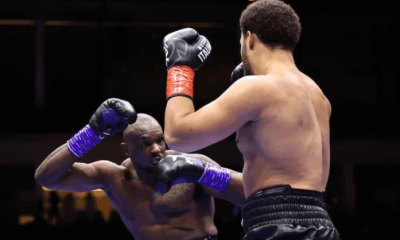
 Featured Articles7 days ago
Featured Articles7 days agoMoses Itauma Continues his Rapid Rise; Steamrolls Dillian Whyte in Riyadh
-
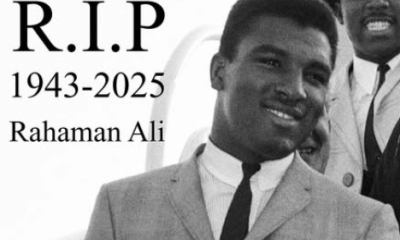
 Featured Articles3 weeks ago
Featured Articles3 weeks agoRahaman Ali (1943-2025)
-
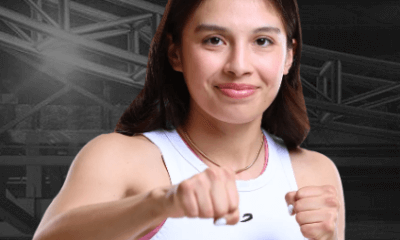
 Featured Articles3 weeks ago
Featured Articles3 weeks agoTop Rank Boxing is in Limbo, but that Hasn’t Benched Robert Garcia’s Up-and-Comers




